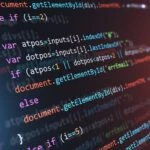When the term computer science first gained popularity, it was used to refer to all aspects of computing, including hardware, software, and other information technology skills, such as networking and security. Computational thinking and coding fall under the broad umbrella of STEM (science, technology, engineering, and math). However, computational thinking and coding are not the same, and the key differences between them are explored in this article.
What is computational thinking?
Computational thinking is a term used to describe problem-solving skills needed to complete tasks involving manipulating, processing, and analysing data. These skills are becoming increasingly important in our digital world as we rely more on computers and other digital devices.
Computational thinking, like coding, involves sequencing steps to solve problems or complete a task. However, instead of using lines of code, computational thinking relies on verbal and visual representations to explain how these solutions will work.
What is coding?
Coding is the process of transforming information into a form that can be understood by a computer. This involves taking detailed instructions written in programming languages and breaking them down into a series of steps for the computer to follow. It is often used to create software, websites, and mobile applications, but can also be applied to other disciplines like scientific research or mathematics. The power of coding comes from understanding how to translate ideas into specific actions that computers can understand and execute.
The goals of computational thinking are different from those of coding
Coding is a set of instructions that tells a computer what to do. It is also a language developer, designers, and other professionals use to create software and websites. So while computational thinking relies on logic and problem-solving skills like coding does, it is not the same. That’s because computational thinking is far more diverse. It includes many different branches of mathematics and computer science used to solve problems in an algorithmic way (i.e., using a sequence of steps). Computer science is just one type of computational thinking; others include statistics, probability, data structures, algorithms, and programming languages.
For example, a statistician might collect information about unemployment or literacy rates to measure social progress in their community. A data scientist would be able to extract patterns from this information and use those patterns for predictions.
Why (and when) should you use computation?
Computation is an umbrella term for how information gets processed by a computer or other device. There are many different types of computation, such as designing an algorithm or creating graphics for an app. As long as you’re working with bits and bytes, you’re engaged in computation. Some people think that programming (e.g., Java, Python) and computation (e.g., Javascript) are the same; however, there are fundamental differences between the two concepts. Computation requires no understanding of programming languages like Java or Python; instead, it is about using whatever software comes preloaded on your laptop (i.e., Microsoft Excel). Coding is a type of language that tells computers what to do. It is often used to create programs and other types of digital content. Computational thinking, on the other hand, is more about solving problems by breaking them down into smaller parts. The goal of computational thinking is not always to make something new or do something different but to use logic to solve a problem or figure out how things work.
What can you do with computational thinking skills?
Computational thinking is not limited to programming. Computational thinking and coding are two different skill sets. Computational thinking can be used in many other fields like medicine, design, and social sciences, to name a few. One of the main differences between computational thinking and coding is that computational thinkers use abstract representations to solve problems while coders use code. These representations could take the form of cards with symbols on them or a map of an imaginary world with coloured dots scattered on it. With these tools, computational thinkers can help people create solutions to some of their most difficult problems without knowledge of programming languages. In online courses for jobs that teach computational thinking, students start off solving basic logic puzzles.
Online courses for jobs start by teaching computational thinking because it provides foundational concepts that are necessary for creating computer programs. It also trains learners to think computationally, which will better prepare them for when they decide to learn to code. Online courses for jobs
will give learners a broader understanding of the field rather than just focusing on coding. Finally, knowing how to think computationally will make you more adaptable in today’s workforce, where jobs may require high-level analytical skills and problem-solving skillsets that rely heavily on math principles.
Full Stack Web Development Course with Placement Guarantee by TimesPro
TimesPro offers a comprehensive introduction to web design and development. Students who enrol in their job guarantee courses will not only learn how to code but also gain valuable skills that will help them build a successful career in technology. Full Stack Web Development course is perfect for students looking for a job as a developer or developer-in-training, as well as designers who want to work with code to create interactive and dynamic websites.
To know more: https://earlycareer.timespro.com/course/timespro-banking-programme-relationship-management/
0



